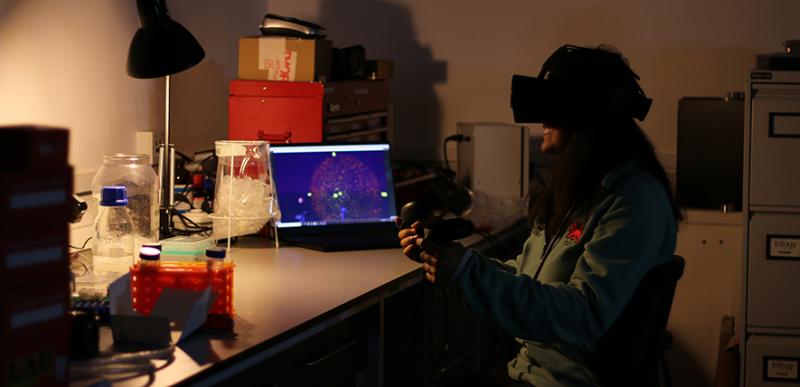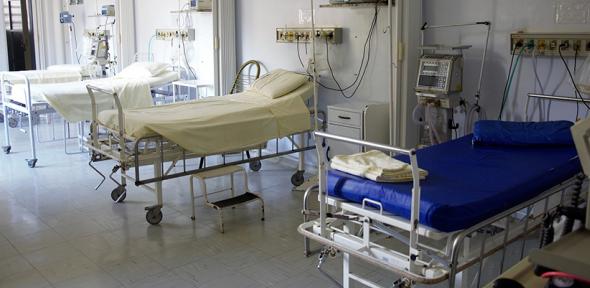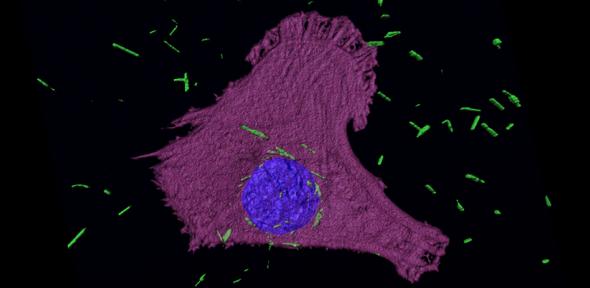Clik here to view.

The Honours were originally meant to be announced in June, but were delayed due to the COVID-19 pandemic. Following approval from Her Majesty the Queen, hundreds of additional people were added to the 2020 Queen’s Birthday Honours list for their contributions tackling the virus on the frontline and in their communities.
Professor Julia Gog from the Department of Applied Mathematics and Theoretical Physics is one of the many individuals recognised for their work on the COVID-19 pandemic. Professor Gog, who is a Fellow of Queens’ College, has been made OBE for services to academia and the COVID-19 response.
In 2018, Julia and her team were behind the UK’s largest citizen science experiment in collaboration with the BBC, using location data from mobile phones to map how pandemic influenza might spread across the UK. The massive dataset that resulted from the experiment, the largest and most detailed of its kind, has been used in the response to COVID-19.
Since the start of the SARS-CoV-2 pandemic, Julia has provided expert advice on infectious disease modelling and COVID-19 to SAGE and its sub-groups - particularly SPI-M-O and the Children’s Task and Finish working group (TFC).
As the lead modelling representative and co-deputy chair of the SAGE’s TFC, Julia has shaped and co-ordinated the modelling advice on options for re-opening schools, a key government priority. Her input has been pivotal to the development of DfE’s response and in developing principles for future interventions.
Through her role on the steering committee of the Royal Society’s Rapid Assistance in Modelling the Pandemic (RAMP) initiative and involvement with other groups (such as the Isaac Newton Institute and Virtual Forum for Knowledge Exchange in Mathematical Sciences), Julia has established working relationships between SAGE and the wider scientific community.
She said: “It’s hugely rewarding to see so many scientists recognised in this way. While I am of course thankful for this personal honour, science is a team pursuit, and I am grateful to so many colleagues for their work and support particularly during this year. While there are still many challenges ahead, we will continue to do all we can to help bring this pandemic to an end.”
Dr Giles Yeo, Principal Research Associate at the Metabolic Research Laboratories and MRC Metabolic Diseases Unit, has been made MBE for services to research and communication and engagement.
Dr Yeo, a Fellow of Wolfson College, is a geneticist interested in studying the brain's control of food intake and body weight, and how these might be dysregulated in obesity. He is from San Francisco, receiving his bachelor’s degree in Molecular and Cell Biology from the University of California, Berkeley. He came to Cambridge in 1994 for his PhD studies. In 1998 he began his postdoctoral training with Professor Sir Stephen O’Rahilly in the Department of Clinical Biochemistry, working on the genetics of severe human obesity.
Giles was the first to report that mutations in the melanocortin-4 receptor (MC4R) and in the neurotrophic receptor TRKB resulted in severe human obesity. In 2007, he became Scientific Director of the core Genomics/Transcriptomics facilities and a group leader at the University of Cambridge Metabolic Research Labs. He is also the current President of the British Society for Neuroendocrinology.
He said: “I can assure you that this was entirely unexpected. Because it was in times of COVID, the notification, instead of being on expensive official stationery, came via email, and I initially thought it was a phishing scam! Anyway, it wasn’t, and I’m deeply honoured to be recognised for my contributions to communicating and engagement in research. I am grateful to be working at an Institution which has allowed me to breathe and to follow my passion.”
Professor Sarah Worthington, from the Faculty of Law and Trinity College, is made DBE for services to English Private Law. She is one of the most prolific, original and influential academics working in the broad field of private law. Since 2011 she has been Downing Professor of the Laws of England at the University of Cambridge, and is currently also a Deputy Vice Chancellor of the University; in 2012 she helped found, and is Director of, the Cambridge Private Law Centre, which promotes informed debate across all branches of private law including obligations, property, family and private international law.
She said: “I feel surprised, delighted and overwhelmed by the honour. It’s wonderful to see legal research recognised in this way, especially research in private law. But research endeavours are never solo projects. I’ve been immensely fortunate to have met and worked with a lot of very warm and clever people who have helped me in all sorts of ways. Thank you to all of them, as I continue to learn from their example.”
Professor Stefan Reif, Fellow of St John’s College and Founder of the Taylor-Schechter Genizah Research Unit at the University of Cambridge, has been made OBE for services to Scholarship. Under his directorship, the Cambridge Genizah Collection was transformed from an overlooked, under-used and only partially available resource to a major literary treasure that is now widely exploited by scholars, and that has revolutionised the understanding of medieval Jewish life. He has contributed significantly to international developments in the historical study of Jewish liturgy, especially clarifying the evolution of Jewish prayer texts in the eastern Mediterranean in Crusader times.
Mark Enzer, CTO at Mott MacDonald and Digital Director at the Centre for Digital Built Britain (CDBB), is made OBE for services to the National Infrastructure. Mark is a keen champion of innovation in the context of collaborative delivery models and he is particularly interested in transformational change in the infrastructure industry. As Mott MacDonald’s Chief Technical Officer, he is accountable to the Executive Board for technical excellence across the Group. As the Chair of CDBB’s Digital Framework Task Group, Mark is contributing to the leadership of the National Digital Twin Programme.
Researchers from the University of Cambridge have been recognised in the Queen’s Birthday Honours, which were announced on Saturday.
Image may be NSFW.
Clik here to view.
The text in this work is licensed under a Creative Commons Attribution 4.0 International License. Images, including our videos, are Copyright ©University of Cambridge and licensors/contributors as identified. All rights reserved. We make our image and video content available in a number of ways – as here, on our main website under its Terms and conditions, and on a range of channels including social media that permit your use and sharing of our content under their respective Terms.


















